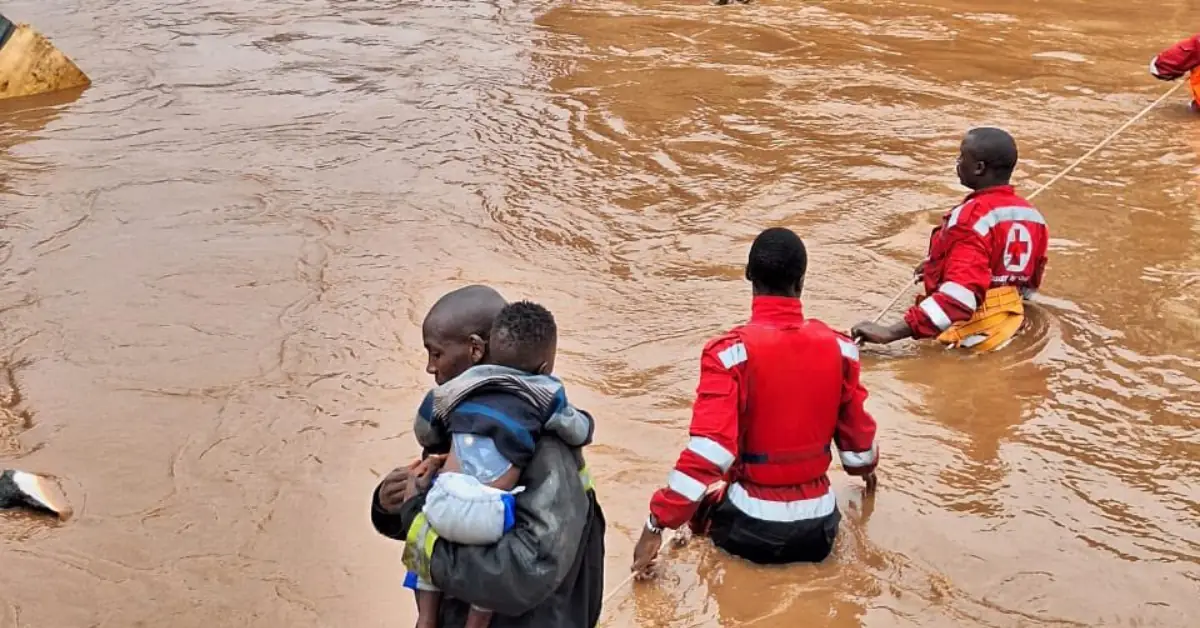Kenya nairobi flooding – Kenya’s capital city, Nairobi, has become a victim of devastating floods, leaving behind a trail of destruction and displacement. The relentless rainfall has overwhelmed the city’s infrastructure, leaving behind a scene of submerged roads, collapsed buildings, and disrupted livelihoods. The impact of these floods extends beyond the immediate crisis, threatening the city’s long-term economic and social well-being.
Nairobi’s flooding crisis is a complex issue with deep-rooted causes, including rapid urbanization, inadequate drainage systems, and the effects of climate change. As the city continues to expand, its ability to absorb and manage rainwater is severely compromised, leading to frequent and severe flooding events.
Impacts of Flooding in Nairobi, Kenya
Flooding in Nairobi has devastating immediate and long-term consequences for the city’s infrastructure, economy, and population. Torrential rains overwhelm drainage systems, causing widespread flooding that damages buildings, roads, and businesses.
Infrastructure Damage
- Flooding weakens building foundations, leading to structural damage and potential collapse.
- Roads are washed away, disrupting transportation and isolating communities.
- Essential services such as electricity and water are disrupted, exacerbating the crisis.
Economic Impacts
- Businesses are forced to close, resulting in lost revenue and unemployment.
- Infrastructure repairs and recovery efforts divert funds from other essential services.
- Flooding damages crops and livestock, impacting food security.
Population Impacts
- Flooding displaces residents, leaving them homeless and vulnerable.
- Contaminated water sources increase the risk of waterborne diseases.
- Flooding exacerbates poverty, particularly among vulnerable communities.
Causes of Flooding in Nairobi, Kenya
Nairobi’s flooding is attributed to several factors, including heavy rainfall, poor drainage systems, and deforestation.
Heavy Rainfall
- Climate change is increasing the frequency and intensity of rainfall events, overwhelming Nairobi’s drainage capacity.
- Urbanization has reduced green spaces, leading to less absorption of rainwater.
Poor Drainage Systems
- Nairobi’s drainage systems are inadequate to handle heavy rainfall, resulting in overflows and flooding.
- Clogged drains and illegal dumping further exacerbate the problem.
Deforestation
- Deforestation in the surrounding hills reduces water retention, increasing runoff and flooding in Nairobi.
- Trees help absorb rainwater, reducing the amount that reaches the city’s drainage systems.
Government and Community Responses to Flooding in Nairobi, Kenya: Kenya Nairobi Flooding

The Kenyan government and local communities have taken steps to address flooding in Nairobi.
Government Initiatives
- Infrastructure improvements, such as drainage upgrades and floodwalls, have been implemented.
- Disaster preparedness measures, including early warning systems and evacuation plans, are in place.
- Public awareness campaigns educate residents about flood risks and prevention measures.
Community Involvement, Kenya nairobi flooding
- Community organizations engage in flood mitigation efforts, such as cleaning drains and planting trees.
- Residents are trained on flood preparedness and response, empowering them to take action during flooding events.
Closing Summary
Addressing Nairobi’s flooding crisis requires a comprehensive and collaborative approach involving the government, urban planners, and the community. Immediate measures must focus on disaster relief, infrastructure repairs, and flood mitigation strategies. Long-term solutions lie in sustainable urban planning, improved drainage systems, and promoting green infrastructure.
By working together, Nairobi can emerge from this crisis as a more resilient city, better equipped to withstand the challenges posed by flooding.
Question & Answer Hub
What are the main causes of flooding in Nairobi?
The primary causes of flooding in Nairobi include heavy rainfall, poor drainage systems, deforestation, and the effects of climate change.
What are the immediate impacts of flooding in Nairobi?
Flooding in Nairobi leads to widespread damage to infrastructure, including roads, buildings, and bridges. It also disrupts essential services such as electricity, water, and transportation, and can lead to the displacement of populations.
What are the long-term consequences of flooding in Nairobi?
Flooding in Nairobi can have long-term consequences for the city’s economic and social well-being. It can damage infrastructure, disrupt livelihoods, and increase the risk of disease outbreaks. It can also lead to the displacement of populations and strain the city’s resources.





